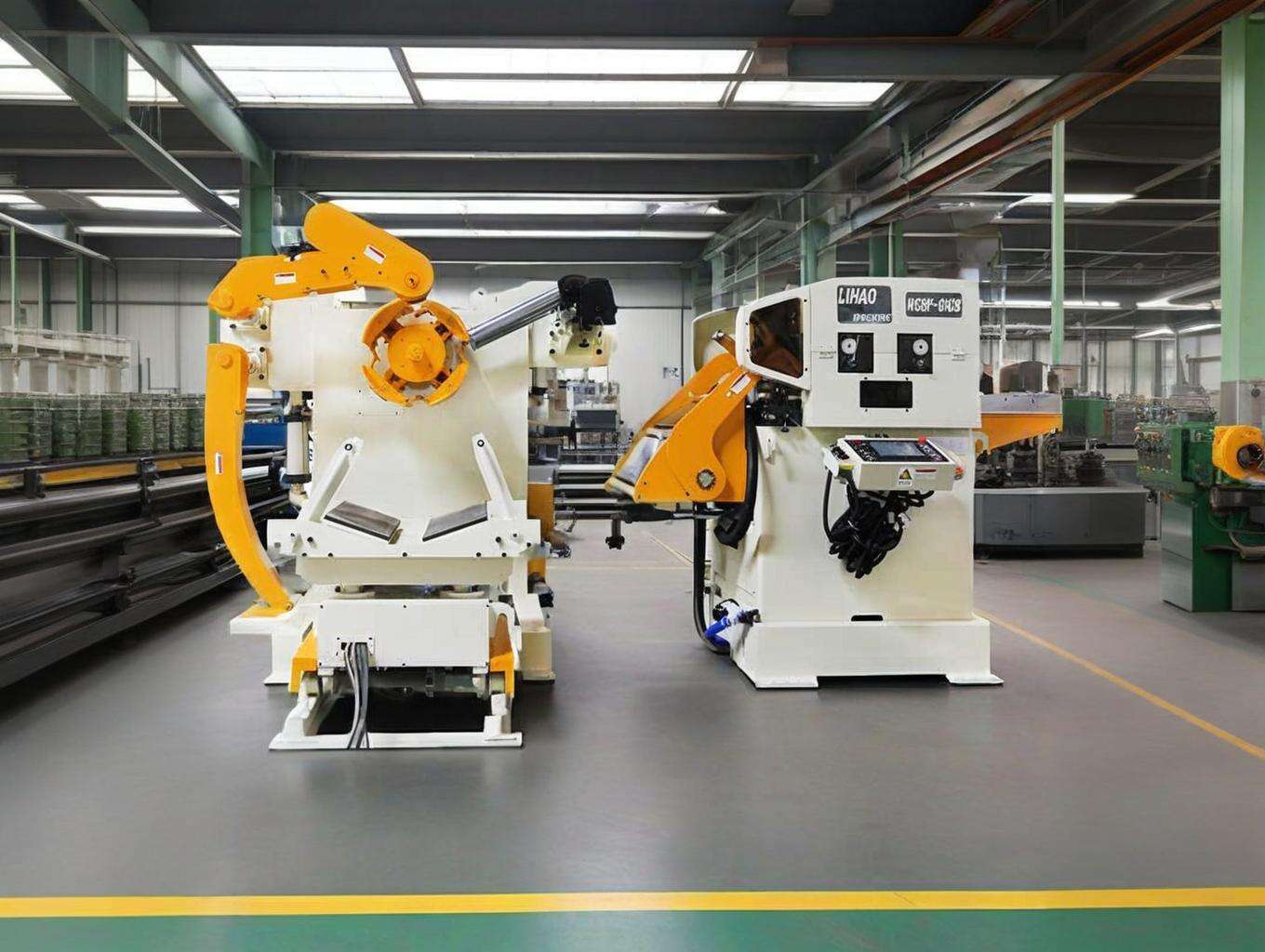What are the main advantages of the three-in-one feeder for thick plate coil feeding?
The 3-in-1 feeder machine was specifically developed to solve space occupancy issues and improve the automation level of stamping production. It is a new-generation automatic feeding equipment designed for efficient and streamlined coil processing.

This integrated system combines a uncoiler, straightener, and feeder into a single compact unit. The machine frame includes a material rack section and a leveling/feeding section. The material rack features a powered shaft equipped with support saddle plates, and is flanked by a pressing arm and coil limit rods. The pressing arm is connected to a pneumatic cylinder, with a supporting rack installed underneath the shaft.
Key Advantages of the 3-in-1 Feeder for Thick Coil Processing
1. Reduced Setup Time & Labor Requirements
Thick materials tend to have higher elasticity, which traditionally makes feeding more complex. In conventional setups, operators often need multiple workers and tools like crowbars to guide the material through the decoiler, leveler, and feeder—each of which must be adjusted separately. This not only consumes time but also increases labor costs and complexity.
The 3-in-1 NC feeder streamlines these processes into a fully integrated system, reducing manual intervention, simplifying operation, and cutting down on setup time significantly. This leads to lower production costs and improved efficiency.
2. Compact Footprint for Better Factory Layout
Traditional coil feeding systems require buffer zones between the decoiler, leveler, and feeder to ensure stable operation, which increases the equipment’s footprint. The 3-in-1 feeder eliminates these buffer zones by integrating all three components into a single unit, optimizing space usage and simplifying production line layouts.
Core Features of the 3-in-1 Feeder Machine
Feeding Section:
1. Equipped with a worm gear reducer and metal bellows coupling for zero transmission backlash and no angular error.
2. Top and bottom feeding rollers use a gapless rotation design.
3. Encoder-based control system ensures high feeding precision with automatic compensation for over- or under-feeding.
4. Extremely low deviation in feed accuracy.
Leveling Section:
1. Rollers made of high-frequency quenched bearing steel, hard-chrome plated to reach a surface hardness over HRC62.
2. Adjustable reinforcement structure in the roller center enhances rigidity.
3. Top rollers adopt a two-point micro-adjustment design, with worm gear adjustment for precise and effortless pressure control.
4. Pneumatic eccentric release system responds quickly to signals from the press, ensuring accurate and efficient material release and alignment.
Decoiler Section:
1. Hydraulic expansion system provides automatic tension control with high reliability and reduced operator fatigue.
2. Pressing arm utilizes variable frequency speed regulation and one-way clutch transmission to prevent coil loosening.
3. Optical sensor system ensures automatic material uncoiling.
4. Pneumatic guiding rail and pressure plate assist in smooth and accurate material insertion into the straightener.
Conclusion
The 3-in-1 feeder machine offers a powerful solution for thick sheet coil processing, combining high efficiency, compact design, and simplified operation. These advantages have made it increasingly popular among manufacturers seeking to enhance their stamping automation and productivity.

